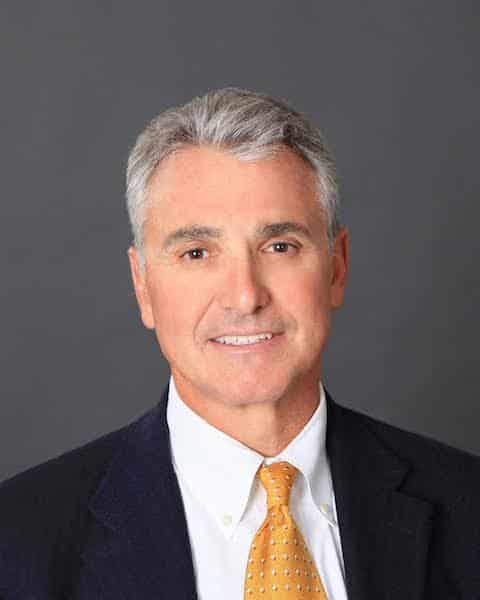New Jersey Spine Institute
Top Orthopedic Spine Care SpecialistsDr. Dwyer and Dr. Vessa believe that the first step in successfully treating back pain with long-term relief, is establishing a clear and accurate diagnosis and detailed treatment plan. We take the time to truly get to know the circumstances and lifestyles of our patients, in order to develop a comprehensive treatment plan that treats injuries and conditions correctly the first time.

James Dwyer, MD
Our doctors are continuosly awarded.
Our team is among the Top Spine Doctors in New Jersey. Dr. Dwyer & Dr. Vessa have been awarded a multitude of Best Spine Surgeon Awards including Most Compassionate Doctor and Top Spine Surgeons NJ by Castle Connolly and NJ Monthly Magazine.


Paul Vessa, MD
Our doctors are continuosly awarded.
Our team is among the Top Spine Doctors in New Jersey. Dr. Dwyer & Dr. Vessa have been awarded a multitude of Best Spine Surgeon Awards including Most Compassionate Doctor and Top Spine Surgeons NJ by Castle Connolly and NJ Monthly Magazine.


James Dwyer, MD

Paul Vessa, MD
Your Passion is Our Mission
Our experienced, talented team of board-certified orthopedic spine specialists offer state-of-the-art medical care, personal contact from consultation through recovery, and peace of mind for patients and their families.
- Disc Herniations
- Spinal Disc Tears
- Spinal Fracture
- Sciatica
- Scoliosis
- Spinal Stenosis
- Degenerative Disc Disease
- Spondylitis
- Spondylolistheis
- Kyphosis
- Facet Joint Disease
Typically there are two forms of disc herniations:
1. Cervical Disc Herniation: often referred to as a slipped disc, means that a disc between one of the 7 vertebrae along the neck has been damaged.
2. Lumbar Disc Herniation: A lumbar disc herniation, often referred to as a slipped disc, means that a disc toward the bottom of the spine (L1 – S1) has been damaged.
Cervical Disc Herniation symptoms would include:
• Neck pain
• Weakness in the upper arm or shoulder area
• Numbness and/tingling sensation in fingers/wrist
• Having trouble gripping with hand
• Difficulty rotating neck
• The type of pain varies from dull to sharp
Lumbar Disc Herniation symptoms would include:
• Lower back pain
• Sciatica (pain that radiates through the leg)
• Numbness or pain in the foot
• Numbness or pain in ankle
• Unable to stretch or extend toes
• Unable to push off with foot
Spinal discs are comprised of a tough fibrous outer layer (annulus fibrosis) and a water and protein mixture (nucleus pulposus). When the fibrous outer layer undergoes a significant trauma or deteriorates due to overuse, small tears can occur causing the fluid to leak out of the disc. This is referred to as an annular tear or a disc tear. These tears can occur in both the cervical and lumbar spine.
Typically, there are three distinct types of annular tears:
- Radial Tear – Caused by the aging process and may lead to herniation of the disc.
- Concentric Tear – Often caused by sudden trauma or injury to the spine.
- Peripheral Tear – Often caused by injury and may cause the disc to break down over time.
Cervical Disc Tear symptoms would include:
- Neck pain
- Weakness in the upper arm or shoulder area
- Numbness and/tingling sensation in fingers/wrist
- Having trouble gripping with hand
- Difficulty rotating neck
- The type of pain varies from dull to sharp
Lumbar Disc Tear symptoms would include:
- Lower back pain
- Sciatica (pain that radiates through the leg)
- Numbness or pain in the foot
- Numbness or pain in ankle
- Unable to stretch or extend toes
- Unable to push off with foot
Symptoms may include:
- Unable to move without pain
- Inability to move the upper or lower extremities
- Weakness and/or tingling sensation
- Numbness
- Loss of consciousness
Sciatica Symptoms can include:
- Persistent pain in the leg
- Pain radiating through the lumbar spine, buttocks, hips, and legs
- Jarring pain while seated
- Difficulty standing and/or walking
- Numbness thigh area
Physical Signs of Scoliosis May Include:
- Visible curvature of the spine
- Shoulders at different height
- Head leaning toward one side
- One shoulder blade protruding further than the other
- Ribs higher than normal
There are two types of Spinal Stenosis that can occur:
- Cervical Stenosis takes place in the neck area. Cervical Stenosis is the more serious diagnosis, because of the possible consequences of the compression of the spinal cord. This compression can cause the space between the vertebras to shrink and has the potential to result in weakness of the body and over time cause paralysis.
- Lumbar Stenosis takes place in the lower back area. Lumbar Stenosis is the more common diagnosis and occurs when the spinal nerves in the lower back are compressed and unable to send clear signals to the lower extremities. This can result in pain and numbness in the leg area, otherwise known as Sciatica.
The conditions that encompass Degenerative Disc Disease include:
- Herniated cervical or lumbar discs
- Spondylosis
- Spinal Stenosis
Degenerative Disc Disease Symptoms can include:
- Pain in neck, thighs or lower back area
- Feeling the need to switch positions constantly
- Pain coming “in and out” for different lengths of time
- Pain while: bending down, sitting down and/or twisting body
- Anxious to lie down to subside the pain
- A tingling sensation in all extremities
Spondylitis symptoms would include:
- Dull pain in the back
- Sharp Pains “in and out”
- Back stiffness
- Trouble walking/bending over
- Tingling Sensation
Spondylolistheis symptoms would include:
- Lower back pain
- Tight and sore hamstrings
- Back spasms
- Walking with a gait or waddle
- Pain or numbness in foot Causes:
- Repetitive force or injury to the spine
- Sudden trauma or impact
- Degenerative Disc Disease
- Spinal Fracture
- Genetic Predisposition
Kyphosis symptoms would include:
- Visible rounding of the back
- Pain or numbness
- Muscle fatigue or stiffness in the back
- Loss of bowel or bladder control
- Chest pain or shortness of breath
Facet Syndrome: This condition occurs when the facet joints of the spine become inflamed and begin to exert pressure on the nerve roots of the spine. This pressure causes both localized and radiating pain.
Facet Cysts: Also known as Synovial Cysts, this condition arises when the fluid filled sacs of the spine create pressure on the spinal nerves. This is most likely the result of poor circulation around the spinal nerves which causes an inability for the blood around the nerves to properly drain. This lack of drainage causes irritation and inflammation of the nerve.
Facet Arthritis: Similar to most arthritic conditions, the cartilage of the facet joints becomes thickened and hardened which can lead to swelling and tenderness. This condition is often worse in the morning and persists throughout the day.
Facet Hypertrophy: This condition most often arises as a result of an injury or as part of the body’s natural response to joint degeneration. Over time, in an attempt for the body to heal the degeneration, new cartilage will form causing the joint to become enlarged.
908-234-9200
or
Send Us A Message
Request Your MRI Review
Our specialists will review your imaging, provide you with an accurate diagnosis and help guide you through the steps to becoming pain-free.
